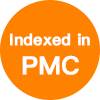fig1

Figure 1. (A) Structure and activation of FLT3 receptor. FLT3 molecule is a tyrosine kinase receptor composed of an extracellular domain (ECD) that comprises 5 immunoglobuline-like repeats, a short transmembrane domain (TMD) and an intracellular domain (ICD) that includes a juxtramembrane (JM) domain followed by two tyrosine kinase (TK) domains (TK1 and TK2). Binding of the FLT3 ligand (FL) to ECD leads to formation of a ternary complex between FL and two receptor subunits with consequent conformational changes and trans-phosphorylation of TK and JM domains. The activated receptor exerts a tyrosine kinase activity against a series of adaptor and effector molecules leading to activation of Ras/Raf/MAPK (RAS) PI3K/Akt (PI3K) and Jak/STAT5 (STAT5) pathways promoting leukemic cell proliferation and survival and suppressing differentiation. Both FLT3-ITD and FLT3-TKD mutations lead to ligand-independent activation of FLT3 signaling; (B) types of FLT3 inhibitors. Type I FLT3 inhibitors interact with the ATP-binding site of the intracellular TK domain (TKD) when the receptor is in active conformation, whereas Type II inhibitors bind to the inactive form of the receptor, thus preventing its activation. Type I inhibitors inhibit FLT3 signaling in AML cells harboring ITD or TKD mutations, whereas Type II inhibitors are active against AML with ITD but not TKD mutations; (C) mechanisms of primary resistance to FLT3 inhibitors: Increased proliferation and survival and decreased differentiation of AML cells may be sustained through (I) Cytochrome P450 3A4-mediated degradation of FLT3-inhibitors by hepatocytes (liver symbol) and BM stromal cells (BMSC); (II) Restoration of FL/FLT3 signaling through compensatory overexpression of wild-type (WT) FLT3 receptor and FL; (III) Activation of common FLT3 and fibroblast growth factor receptor type 1 (FGFR1) downstream target pathways through the increased fibroblast growth factor 2 (FGF2)/FGFR1 signaling; (D) mechanisms of secondary resistance to FLT3 inhibitors: (I) Secondary resistance of FLT3 receptor to pharmacological inhibition may be conferred through newly acquired activating mutations of FLT3 TKD (red asterisk), and upregulation of pro-survival mechanisms through acquired activating mutations in RAS/MAPK pathway genes (II) and epigenetic modifiers like DNMT3A, TET2, IDH2 or transcriptional regulators like WT1 and TP53 (III). Green and red rectangles correspond to activated and inactivated FLT3 downstream signaling pathways, respectively. Yellow “P” circles indicate phosphorylated receptor domains. Green and red arrows indicate positive and negative regulation, respectively.












